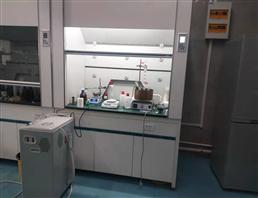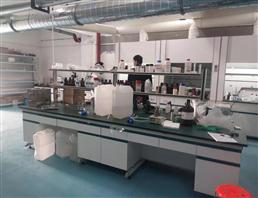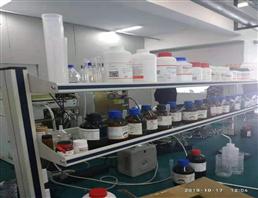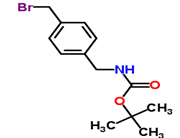Product Name: Cefetamet hydrochloride
Synonyms: Cefotaxime EP Impurity A (Cefetamet);Cefotaxime impurity 1/Cefotaxime EP Impurity A/Deacetoxy Cefotaxime/Cefetamet/(6R,7R)-3-[(acetyloxy)methyl]-7-[[(2Z)-2-(2-aminothiazol-4-yl)-2-(methoxyimino)acetyl]amino]-8-oxo-5-thia-1-azabicyclo[4.2.0]oct-2-ene-2-carboxylate;Cefyl;Globocef;LY-097964;Ro.15-8074:Ro-15-8075;(6R,7R)-7-[[(Z)-(2-Aminothiazole-4-yl)(methoxyimino)acetyl]amino]-3-methyl-8-oxo-5-thia-1-azabicyclo[4.2.0]octa-2-ene-2-carboxylic acid;FR-13300
CAS: 65052-63-3
MF: C20H26ClN5O7S2
MW: 548.03
EINECS: 675-838-9
Product Categories:
Mol File: 65052-63-3.mol
Cefetamet hydrochloride Structure
Cefetamet hydrochloride Chemical Properties
density 1.83±0.1 g/cm3(Predicted)
pka 3.11±0.50(Predicted)
CAS DataBase Reference 65052-63-3(CAS DataBase Reference)
Safety Information
HS Code 2941906000
MSDS Information
Cefetamet hydrochloride Usage And Synthesis
Uses Cefetamet is a third-generation cephalosporin antibiotic and the active agent of Cefeamet pivoxil (C242780) after hydrolysis.
Antimicrobial activity A semisynthetic cephalosporin formulated for oral use as the prodrug ester, cefetamet pivoxyl. It is less active than cefaclor and cefadroxil against Staph. aureus, but as active against streptococci and more active against enterobacteria, H. influenzae and N. gonorrhoeae, including β-lactamase-producing strains. L. monocytogenes, C. difficile, Sten. maltophilia and Burk. cepacia are all resistant. It is resistant to hydrolysis by common plasmid-mediated enzymes.
The absolute bioavailability is about 50%. The plasma peak is delayed by food. Binding to plasma protein is about 20%. The volume of distribution approximates to the extracellular water. It is excreted into urine with a half-life of 2–2.5 h, principally in the glomerular filtrate. Elimination is linearly related to creatinine clearance. Side effects and uses are similar to those of other group 5 cephalosporins.

 China
China










